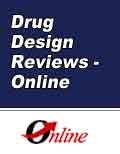Abstract
Tuberculosis (TB) is a growing international health concern and the appearance of multidrug-resistant (MDR) TB has greatly contributed to the increased incidence of TB. Because of the increasing rate of MDR-TB and the high rate of a co-infection with HIV, the development of potent new anti-TB drugs without cross-resistance with known antimycobacterial agents is urgently needed. This article deals with the following areas. First, the future development of new antitubercular drugs is discussed according to the potential pharmacological targets. New critical information on the whole genome of Mycobacterium tuberculosis (MTB) recently elucidated and increasing knowledge on various mycobacterial virulence genes will promote the progression in the identification of genes that code for new drug targets. Using such findings on MTB genome, drug development using quantitative structure-activity relationship may be possible in the near future. In this review, I describe the drug targets for development of new classes of drugs, especially those active against dormant types of MTB. Second, I will review the drug vehicles which enable efficacious drug delivery to their target in vivo. The usefulness of liposome and microsphere technologies, which enable the encapsulated drugs to deliver the requested doses of them for prolonged time periods by a single shot without causing any toxicity and, moreover, enable the highly targeted delivery of the drugs to host macrophages, is discussed.
Keywords: antituberculous drugs, tuberculosis, mycobacterium tuberculosis, drug targets, bioinformatics, drug delivery
 1
1

